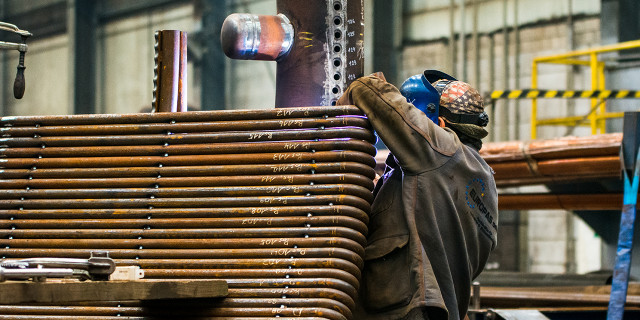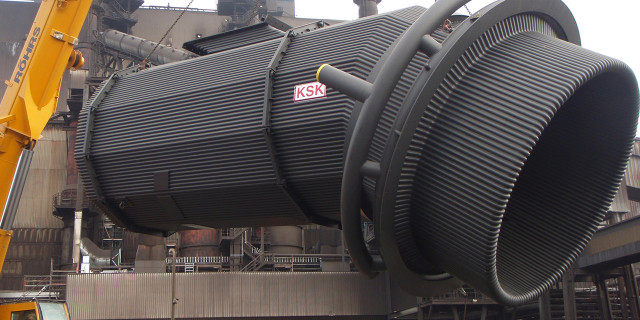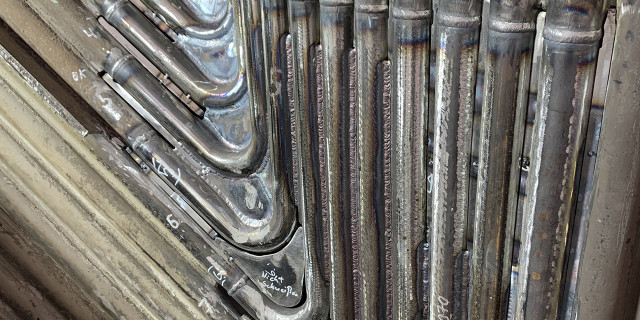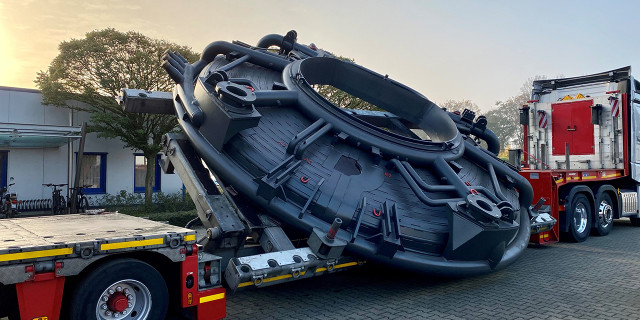
Shape metal.
Apparatus manufacturing has the longest tradition at KSK. Most of the constructions we manufacture in the area of melting and recycling units and in the area of exhaust gas cooling are designed as pipe constructions. In order to meet more specific requirements, we also regularly use special designs with cooling channels or half shells. Depending on the application, we process boiler steel, stainless steel and copper in various grades.


Assembly

Repairs

Warehousing/ Delivery of spare parts
Boilers and pressure vessels
Apparatus manufacturing is a branch of mechanical engineering (related to plant engineering) and deals with the design, manufacture and layout of special apparatus. The design and manufacture of apparatus requires extensive knowledge of manufacturing theory, materials science, fluid mechanics and design theory. Apparatus engineering usually involves the manufacture of containers whose parts and components are made of different materials. In many cases, the equipment is used in technological processes such as steel production, recycling or energy. At KSK, we have been supplying special designs in the field of apparatus engineering for almost 40 years. Our apparatuses not only consist of a tubular body, but are also heat exchangers and pressure vessels or steam boilers.
In apparatus engineering, the pressure vessel is defined by a specific function (storage, filtration, heat transfer). In particular, pressure vessels are closed vessels in which the internal pressure is higher than the ambient pressure. A pressure vessel is a closed container that contains a liquid or a gas. The operation of pressure vessels is defined for a specific installation site. Steam boilers are used to generate steam or hot water (above 110 °C) with the help of a furnace, an electric heater or waste heat. Pipelines that transport liquid are not pressure vessels. Pressure vessels of different sizes and shapes are manufactured for different purposes. Classic pressure vessels are preferably spherical, conical or cylindrical in shape. A typical design in apparatus engineering is the combination of a long cylinder with two bottoms. If you compare this form of apparatus construction with KSK's special apparatus - for example with a hot gas duct - it is noticeable that at first glance our apparatus construction does not have any bottoms and often does not even represent a closed body. So how can this be a pressure vessel in the sense of apparatus engineering? The answer is simple: the actual vessel is not the body (usually) formed from pipes, but the pipes themselves. These act as heat exchangers between the exhaus gas and the water flowing through them and are pressurized, as in 99% of cases they are in closed-loop cooling circuits.
Trust is good, testing is better
The manufacture and assembly of vessels is a central component of apparatus engineering. The manufacture of pressure vessels or vacuum vessels must meet the strictest safety requirements, which are regulated in the Pressure Equipment Directive 2014/68/EU (harmonization of the laws of the Member States relating to the making available on the market of pressure equipment, specifies the requirements for pressure equipment to be placed on the market within the European Economic Area). In KSK's apparatus engineering, pressure vessels essentially fall into two categories of the Pressure Equipment Directive:
- 'Good engineering practice' according to Article 4(3) of the PED means that the pressure equipment has been designed taking into account all relevant factors affecting its safety.
- Category IV, Module G (individual testing)
Unit verification ensures the highest possible product safety and versatility. The notified body examines the technical documentation and inspects the pressure equipment. After a positive test result, the notified body issues a certificate of conformity. This is the basis for the manufacturer to issue a declaration of conformity and CE marking. Before construction begins, the manufacturer must submit drawings in original size for approval by the purchaser and the testing body. In addition to dimensions and thickness specifications, these drawings must contain the following information:
- Application welding method
- Important welding details
- Heat treatment processes applied
- Requirements for non-destructive testing
- Test pressure
Apparatus manufacturers are often required to maintain a material identification system so that all materials in the finished pressure vessel can be traced. During the apparatus manufacturing process, each pressure vessel must be inspected by a notified body. The standard specifies the steps from receipt of raw materials to packaging of finished products that must be inspected by the agency. For example, a customer may request further inspections of the internals. The manufacturer must specify the welding procedures used in the manufacture of the pressure vessel and provide test specimens that match the material and thickness used in the actual pressure vessel. The inspection body shall generally supervise the preparation and testing of these test pieces unless certified test pieces are already available. Welders must pass a certification test in apparatus fabrication to show that they can produce weld joints identical to those in a real vessel. An accredited certification body authenticates these certificates for welders in apparatus engineering.
